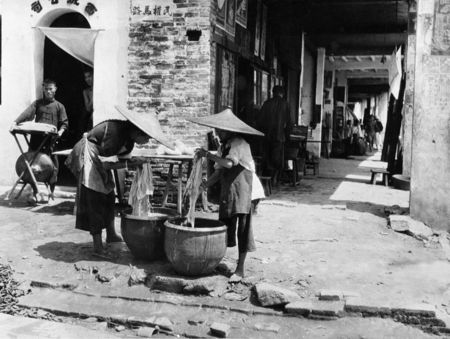Cleanliness was not always a high priority among residents of San Fransisco in the Mid-19th Century. That being said, many did focus on personal hygiene. Social etiquette ultimately required it.
It was not easy to do your own laundry during the Gold Rush. In order to wash your own clothes in San Francisco, you had to buy water at a cost of 25 cents for two bucket worth. Men did not believe they should be washing their own clothes, so quickly entrepreneurial folks began the service.
By 1848 the central location for laundering was what they called Washer Woman’s Bay. It was actually a nine acre lake. Women. primarily Hispanics set up shop. They constructed tables along the shore they used as platforms to clean clothing.
The process was simple. An article was dipped into the lagoon and then stretched out on the table where it was rubbed with soap shaken and dipped in the lagoon again. This process was repeated several times. The piece of clothing was hung on a line to dry.
By 1854, the Chinese began to take over this industry. A newspaper article in the Daily Alta, a popular newspaper stated that ethnic and nationality mix of laundry workers doing business in Washer Woman’s Bay was as follows, “Two hundred Chinese, fifty Mexicans, fifteen Hindoos (sic), fifteen French and the remainder Americans and Germans.
”Ultimately the “Chinese Laundry” was born. Establishments in China Town processed nearly all the laundry in the city in 1855.
In my novel Equal and Alike my main character is invited into the private quarters of a prominent member of the Chinese community where he is exposed to the unique lifestyle of those living in China Town. Come join me for the adventure

